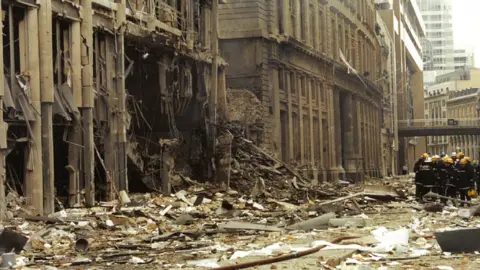
I won’t lie. Despite wanting nothing more than to participate in this program, I knew going into this that I would be going to places that might make me anxious. I worried about what I might encounter, and how I would respond. One of the locations I worried about visiting was Utah Beach in Sainte-Marie-du-Mont, France. Then, the second site I worried about was the American cemetery in Normandy after Omaha Beach.

“Second lieutenant Walter Sidlowski kneels over the blanket covered body of an American soldier he had just helped rescue from the surf off Omaha Beach” (The National World Was II Museum – New Orleans).
My anxiety about visiting these spaces stemmed from not knowing how other visitors would act. I am afraid of exhibiting negative emotions in an already extremely emotional place. For example, at the American cemetery in Normandy, there were several groups of foreign children who were quite literally running around the cemetery laughing and talking loudly with a paper assignment in their hands. I understand that the people buried there are not from the same country as the children, but I think that they shouldn’t have acted in the ways they did. Seeing them run down pathways made me angry. Where was the respect that burial places, and places of death, command?

Me placing an Ohio State flag beside the grave of Major Robert A. Lane, a 1934 Ohio State Alumnus who died in Normandy, France (Emma Knox).
Asking this question led me to consider another source of anxiety pertinent to both Utah and Omaha beach. Prior to visiting them, I asked Dr. Steigerwald if the beaches were used to do the whole beach-day thing. I was genuinely appalled when he told me that they had been before D-Day, and they still are. I said that it was like sun tanning in a cemetery, therefore, I proceeded on each beach, especially Utah and Omaha with caution.

Utah Beach Memorial (Scully-Tenpenny).
I’ve realized that I am caught in the past, while being in the present. Watching the beaches from afar, I was in my safe space where I’ve always been studying World War II. My feelings changed as I entered these spaces, standing on the sand where thousands of American soldiers fought, and died, almost 80 years ago. Utah Beach no longer looks like it did on June 6, 1944. None of the others do either, except for the Mulberry Harbor turning green and fuzzy with time near the shores of Gold Beach. School kids play soccer in the sand, horse racers use the wide expanse of beach to practice, and with how clear and blue the water is on a warm, sunny day, it’d be a waste for the beaches of Normandy to sit unused, stuck in the past. I’m grateful for the time I had in France and the time spent preparing for it, which has helped me to understand why remembering the past and enjoying the present can be experienced at the same time. Also, acknowledging that everyone deals with the memories of the past differently, and for the French, that means sun tanning on the beaches of Normandy. I think I would too, if it weren’t for the 3,752 mile journey to get there. My anxiety hasn’t subsided, but I do know that it will as I visit them in the future.

A survivor from a sunk American landing craft being helped ashore, Omaha assault area, 6 June 1944 (IWM).

Omaha Beach – 2024 – Kids playing soccer, tractors used to get small boats in and out of the water, the restaurant on the boardwalk (Scully-Tenpenny).































